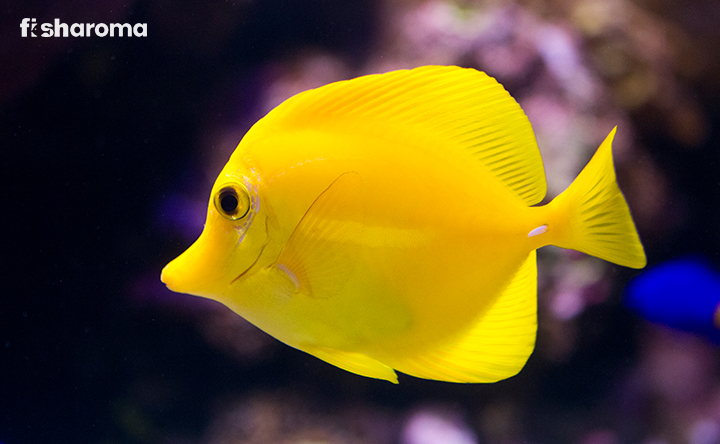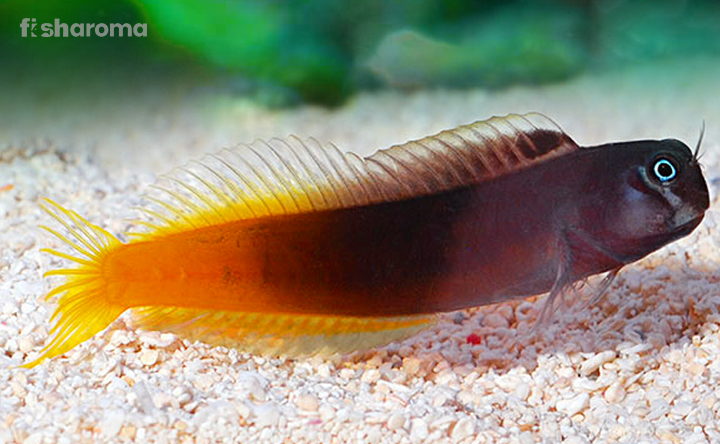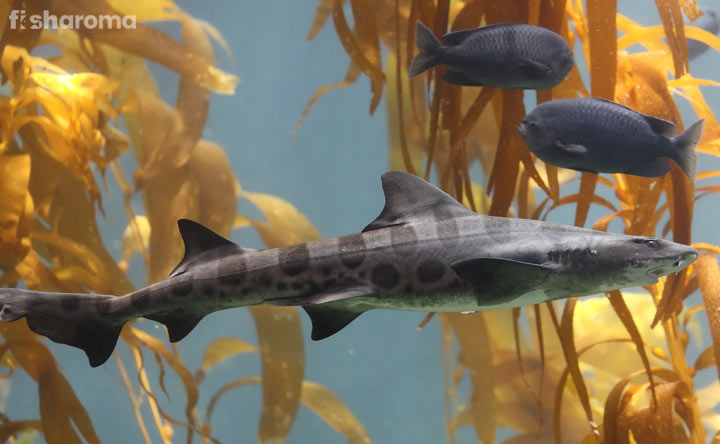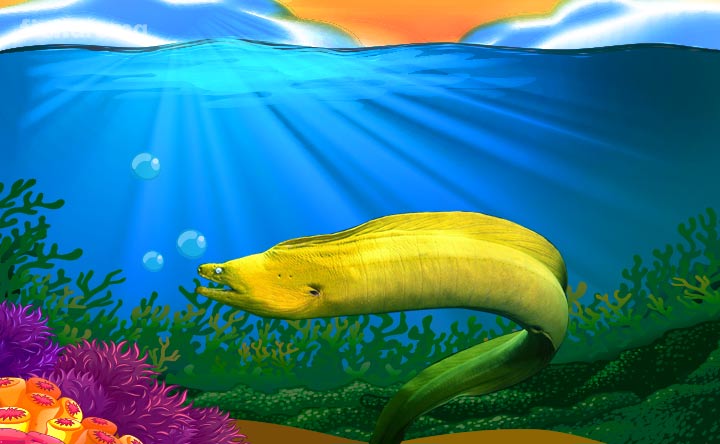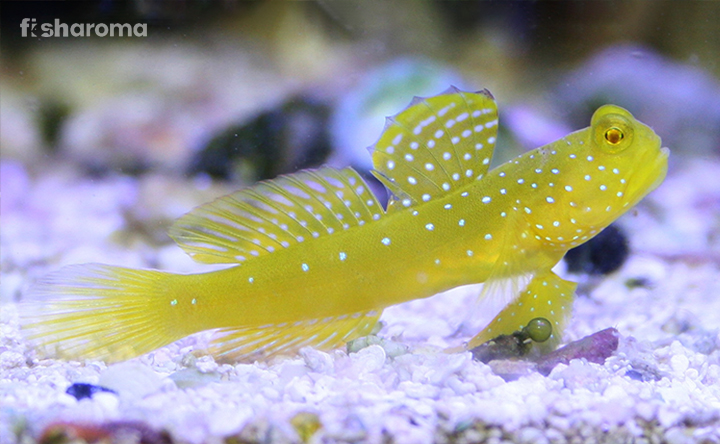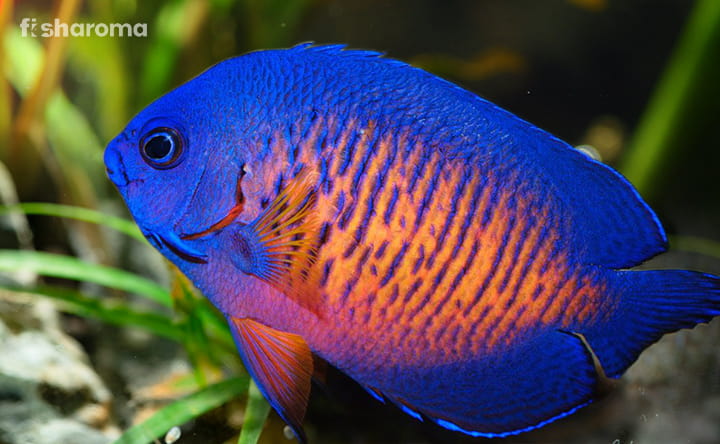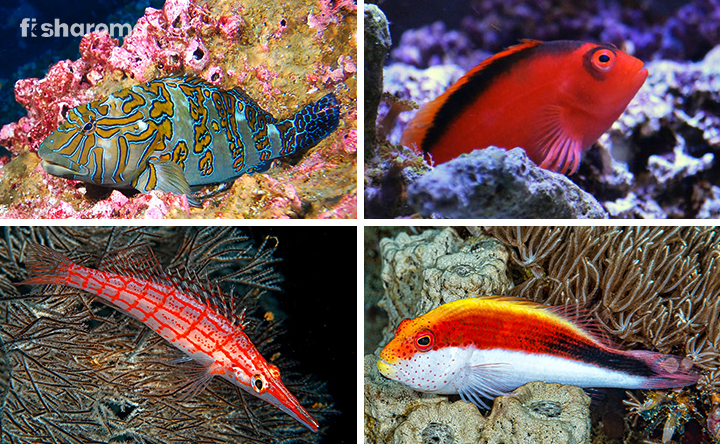Pipefish – Know How to Take Care of Your New Pet

The popularity of unconventional fish for aquariums is on the rise now more than ever. Gone are the days when people used to think only about goldfish or angelfish or catfish for populating their fish tank. Uncommon fish such as the Pipefish are slowly becoming popular with fish pet lovers. But, since these fish are so unfamiliar to us, it is important we get to know their living habits and behavioral pattern.
Key Specifications of Pipefish
Before going into the details, take a look at some of the key specifications of Pipefish that will help you get an overall idea of this species.
| Scientific Name | Syngnathidae |
| Family | Syngnathidae |
| Origin | Tropics |
| Size | 8” (20.32 cm) |
| Color | Brown, Red, Black, Yellow, Blue |
| Care Level | Difficult |
| Lifespan | 25-10 Years |
| Temperament | Generally Peaceful |
| Compatibility | Low |
| Tank Size | 30-Gallons (On average) |
| Diet | Carnivorous |
Overview
Members of the Syngnathidae family, Pipefish are the cousins of Seahorses and Sea-Dragons. They have gained their name from their elongated snout that is shaped just like a pipe. They are a type of saltwater fish. However, a small variant of them is found in freshwater too.
Their weak immune system makes them difficult to pet, but that is not stopping fish enthusiasts from around the world in petting them. The major reason behind it is them being this exotic, mythical-esque creature. Not only are they beautiful to look at, but their active energy (despite being slow) keeps the scenery inside the aquarium pretty dynamic.
There are over 200 types of Pipefish, but very few of them can be pet in captivity.
Origin & Habitat of Pipefish
Although their exact source of origin is not known, it is generally believed that they originated from the saltwater of tropical, sub-tropical and temperate areas.
They can be found in open oceans at a depth of around 400 meters (approximately 1300 feet). They inhabit seagrass, eelgrass, coral reefs, and lagoons. Known for being an excellent camouflage, they use the grass for hiding from predators as well as sneaking in on their preys.
Appearance of Pipefish
The body of this fish is similar to that of a seahorse, eel, and a snake. Their snout-shaped mouth is in the shape of a long cylindrical pipe that ends in a small and narrow mouth that is toothless and it opens upwards.
They come with a long thin tail and have an extremely modified skeleton formed into armored plating. Their locomotion is guided by their dorsal fin. Most of the other fins, including the ventral fins, are generally absent. They have small gill openings that are located beside the upper posterior angle of their gill cover. Unlike Sea-horses, they have caudal fins that also assist them in their movement.
Size of Pipefish
They are generally much smaller than the other members of their family, i.e. seahorse and sea-dragons. On average, they grow up to eight 8” (20.32 cm). Although Pipefish as large as 26” in size have been discovered, they are fairly rare. Their straight slender elongated body adds to their elegance.
Color of Pipefish
Pipefish come in a variety of colors, the most common of which are red, blue, black, brown and yellow. However, those who pet them in their aquarium generally scout for rarer colored Pipefish, such as purple and orange.
Some varieties of Pipefish are even known to change their colors in order to adapt to their surroundings.
Behaviour of Pipefish
One of the best features of Pipefish, as we mentioned earlier, is that they are pretty active and there is hardly ever a dull moment with them. They can always be seen drifting along the current in your fish tank or hanging upside down or moving horizontally in and around the vegetation and caves of the tank.
They are also known for their stealth. It is not uncommon to see them slithering through the seagrass in a calm unnoticeable manner. This helps them stay off-the-radar from their predators. Catching food also becomes easier for them because of their unassuming nature.
Although generally slow in speed, they can bullet through, if needed, at times of emergency or when in search of food in extreme conditions.
If pipefish are kept with long vertical plants in an aquarium, they mimic them by adopting a vertical position with their heads down. This is their way of catching prey in the wild.
Types of Pipefish
Amongst the 200 types of Pipefish, the most common types are as follows:
Banded Pipefish
This type of Pipefish loves to live in pairs; however, they are pretty weak and don’t do well in captivity. They require constant attention. They are also the most common form of Pipefish.
Bluestripe Pipefish
They are generally different from other types of Pipefish because they exhibit traits of aggressiveness that is not usually seen in a Pipefish. They are also comparatively smaller in size, growing to a length of 3”. But that is what makes them more active and faster than other Pipefish.
Dragonface Pipefish
The Dragonface Pipefish refuse to eat frozen food, which makes them difficult to pet. They love to live in groups and when they see themselves drifting apart from their buddies, they quickly attach themselves to their partner’s side.
Lifespan of Pipefish
Unlike most small aquarium fish, they have a long lifespan. In the wild, they live up to 10 years. Although they don’t thrive well in a synthetic environment like that of an aquarium; if kept healthy, they can at least live up to five years.
Diet of Pipefish
Pipefish are carnivores in nature. In the wild, they feed upon the following:
- Small Insects
- Plankton
- Amphipods
- Copepods
- Crustacean
- Worms
- Ghost Shrimp
- Brine Shrimp
- Small Crabs
- Snails
- Small Fish
It is advised that their diet in an aquarium should also reflect a combination of these foods.
Since they generally are peaceful in nature, they do not like or are even capable of competing with others for their food. Hence, if you keep them with other fish, make sure there is enough food for everyone. Also, they need proper light to find their food.
Due to their short digestive tract, they can’t eat a large portion of food at a time. They generally feed on less quantity of food at frequent intervals.
Although you can feed them frozen food, it is recommended that from time to time, you give them a dose of live food. It also goes without saying that frozen food must be thawed properly before feeding them. You should give them the time to adjust and transition to frozen food. One can’t suddenly adapt to frozen food in a day or two. If you don’t have access to live food daily, keep feeding them frozen food along with live food and gradually shift to frozen food.
Since they are a saltwater species, their bodies are naturally built to sustain on highly unsaturated fatty acids. If you feed them freshwater organisms, they will suffer from a lack of these acids.
They are a fast-eater and are known to feed on their food by sucking food rapidly into their mouth. However, it should be noted that they have a small mouth opening. Therefore, the size of the food, especially the frozen food should be small. You can use a cheese-grater to make the size of your frozen food small.
Frozen Cyclop-eeze and frozen Mysis are safe frozen food options for pipefish.
Tank Requirements of Pipefish
Pipefish are very sensitive in nature and require heavy care. It is very vital to create a natural habitat for your Pipefish. To do so, you need to keep in mind the following pointers.
Tank Size
First and foremost, you need to select an appropriate tank for your new pet. They require a large space to thrive healthily. For each Pipefish, there has to be 30-gallons of water present in the tank. So, as you can imagine, you would need quite a large tank for petting them. The size of the tank subsequently increases with the rise in the numbers of Pipefish.
Nature of Lighting
As we mentioned earlier in the diet section, they need proper lighting to find their food. Therefore, make sure that your tank has artificial lights that will help them find food when the sun is down. But that doesn’t mean that you should keep the lights on 24*7. Period of darkness in a day is also necessary for their healthy growth.
Tank Lid
Keeping a lid on your tank is always a good idea when it comes to Pipefish because they crawl their way out of the tank, thereby injuring or endangering their life. If they are not found in the tank all of a sudden, be sure to check the sump and overflow first.
Filter
Install a filtration system in your tank that will not only regulate the flow of fresh oxygen but also remove waste products from the tank, keeping it as clean as necessary for the survival of your pet. However, make sure that the current generated by your filter are not too strong as Pipefish are weak swimmers.
Ornaments
Pipefish love to camouflage themselves in the wild. Therefore, keeping artificial and natural ornaments in your tank will help mimic its habitat. Include caves, rocks, artificial or natural grass and lot of plants in your aquarium. Live rocks will not only help in the biological filtration but will also provide them natural food.
Presence of Flora
As we have just mentioned in the above point, they love to camouflage and spend most of their time hiding in the wild in seagrass and eelgrass. Basically, they need good hiding spots. Therefore, adding plants and grass to your tank is a good idea. Natural plants, although may be difficult to maintain, is recommended since Pipefish will feel more at home in their presence.
Water Type of Pipefish
After setting up the tank, your next step should be to check the water type for your new pet. Try to keep the following things in mind when doing the same.
Temperature
Pipefish are tropical species; therefore, they prefer a bit of warm water. Try to maintain a temperature between 72° F (22° C) to 77° F (25° C).
pH Level
Pipefish need alkaline water to survive. The pH level of the water in the fish tank that houses your Pipefish should be between 8.1 and 8.4.
Mineral Level
The water has to be saltwater as that is its natural habitat. You can buy saltwater from the store and you can also prepare it at home, but the latter requires a lot of precision and effort. The gravity of the water should be between 1.020 and 1.025. It should have low ammonia and nitrates and the level of nitrites should be less than 0.2 ppm.
Hardness
The carbonate hardness of your water should be between 8-12 dKH. Try to check on the hardness of your water on a weekly basis. There are many water-testing kits available in the market through which you can test not only the hardness of your water, but also the temperature, pH level, mineral level, and gravity of the water. Try to get one for yourself since these will help you keep a tab on the quality of your tank water.
Replacement Procedure
You should check the quality of the water at least once a week. Do not change the entire water all of a sudden because doing so will remove all the beneficial bacteria as well as it will create a lot of difficulties for your pipefish to adapt. Replace 10-25% of the total volume of the water every two to four weeks.
Compatibility of Pipefish
A Pipefish can co-exist with another pipefish easily; especially a male and a female can be kept together peacefully in your home fish tank. You can also keep groups of them together, but they require specialized care. You would have to take the help of an expert or an aquarist if you plan on keeping groups of them together.
When they are kept together, they often grab each other’s tails to form a long train like shape. Even seahorses tend to cling onto the tails of Pipefish. It creates quite the spectacle in the aquarium.
When you plan to keep more than one Pipefish together, remember that you need to increase the size of your tank too.
Suitable Tankmates for Pipefish
Pipefish need peaceful, slow-moving, non-competitive fish as their companions. It is recommended that they are kept in a species tank or with seahorses. A species tank is a tank that houses only members of a specific species.
Some of the ideal aquatic beings that can co-exist peacefully with a Pipefish are:
- Seahorse
- Gobies
- Dragonets
- Dartfish
- Jawfish
Unsuitable Tankmates for Pipefish
Territorial and aggressive fish and other aquatic animals should not be kept with Pipefish. Also, they should not be kept with someone with whom they have to compete for food. The following is a list of beings that should strictly not be kept with this fish.
- Maroon Clowns
- Puffers
- Clams
- Sea Anemone
- Wrasses
- Blennies
- Triggerfish
- Toby Fish
- Porcupinefish
Breeding of Pipefish
As mentioned earlier, there are many variants of the Pipefish. Some of them are easy to breed while others are hard to breed.
Similar to their seahorse cousin, in case of Pipefish too, it is the males who carry the eggs.
The process of mating is preceded by a couple of rituals that take place between the male and female. They also have to swim at a similar speed in order to mate. After the mating process, the females keep the eggs on a spongy area on the tail that is present only in males. Some species of Pipefish even come with a pouch to keep their eggs on.
After the gestation period, the duration of which is depended on the number of babies that are supposed to take birth, the babies are left to fend for themselves. As a result, most of them end up being the prey for predators or even their own parents. Less than 1% of the babies reach maturity, which essentially means that their chances of survival are very less.
Pipefish Diseases
Pipefish need regular care since they are prone to multiple diseases. Before buying one from the pet store, make sure they are healthy enough. The most common diseases contracted by this fish and their symptoms are:
Snout Rot
The symptoms of snout rot are loss of appetite, swelled up snout, erosion of the snout, discoloration of the snout, etc.
Ectoparasites
It is marked by visible parasites that come in the form of white spots over its body, erratic behavior, blisters, ulcerations, cloudy eyes, among others.
Bacterial Infection
The symptoms of bacterial infection are skin erosion, rapid breathing, loss of appetite, swelling and cloudy eyes.
Difficulties in Petting Pipefish
The most obvious difficulty in keeping a Pipefish at home is that they need a very large tank to live. Not everyone can accommodate a 30-gallon tank, which is the standard sized tank for a single Pipefish.
Also, they can’t be kept with fast-moving and competitive fish. So, if you are planning to host an array of different species of fish together with Pipefish, then you might have to reconsider.
Interesting Facts about Pipefish
- The oldest record of a Pipefish is through a fossil fuel that is estimated to be around 50 million years old.
- Some species of Pipefish can change their colors based on their surroundings.
- While feeding, few species of Pipefish make a clicking sound that is generated by the bony edges of their skull.
Summary
Despite being an uncommon choice for an aquarium, Pipefish are slowly and steadily gaining popularity among pet lovers. However, they require a lot of effort from your end to make sure they are living healthily. Not only do they need a large tank, but they are also not easily adaptable to frozen or easily accessible food. Nevertheless, they are a peaceful, slow-moving creature that can add a sense of charm to your tank.
Other Peaceful Saltwater Fish for Your Aquarium
Some of the other peaceful saltwater fish that are similar in nature to that of Pipefish are as follows:
- Blenny Fish – Extremely adorable to look at, Blenny fish mostly spend their time hiding among rocks and plants, while peeping every now and then to check on its surroundings. Their temperament is peaceful.
- Watchman Goby – The Watchman Goby are regarded as a great pick for beginners. They are pretty calm and non-aggressive. They get along with other species easily. However, their compatibility with their own kind is a bit low.
- Firefish – Calm and composed in nature, firefish is an interesting choice for saltwater aquarium. Their long white body combined with their fiery red/orange tail gives them a unique look.
- Royal Gramma – Royal Gramma adds a beautiful dash of color to the aquarium with their purple anterior and yellow posterior. They love hiding in caves and rocks and are peaceful in nature.


